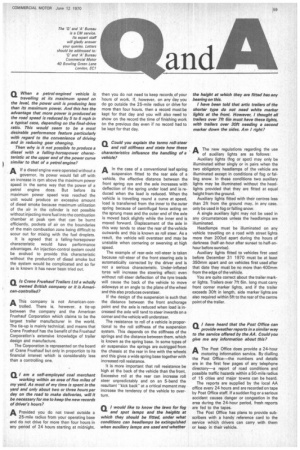Q When a petrol-engined vehicle is
Page 61

If you've noticed an error in this article please click here to report it so we can fix it.
travelling at its maximum speed on the level, the power unit is producing lass than its maximum power. And this has the advantage that more power is produced as the road speed is reduced by 5 to 6 mph in a typical case, depending on the final-drive ratio. This would seem to be a most desirable performance feature particularly with regard to the convenience of driving and in reducing gear changing.
Then why is it not possible to produce a diesel with a falling-horsepower characteristic at the upper end of the power curve similar to that of a petrol engine?
AIf a diesel engine were operated without a
governor, its power would fall off with an increase in rpm above the maximum power speed in the same way that the power of a petrol engine does. But before its maximum power speed was reached the unit would produce an excessive amount of diesel smoke because maximum utilization of the air in the cylinder is not possible without injecting more fuel into the combustion chamber at peak rpm that can be burnt efficiently, pockets of air on the boundaries of the main combustion zone being difficult to scour out for mixing with the fuel droplets.
It is agreed that a falling-horsepower characteristic would have performance advantages. An injection-control system could be evolved to provide this characteristic without the production of diesel smoke but the system would be complicated and so far as is known it has never been tried out.
























































































































